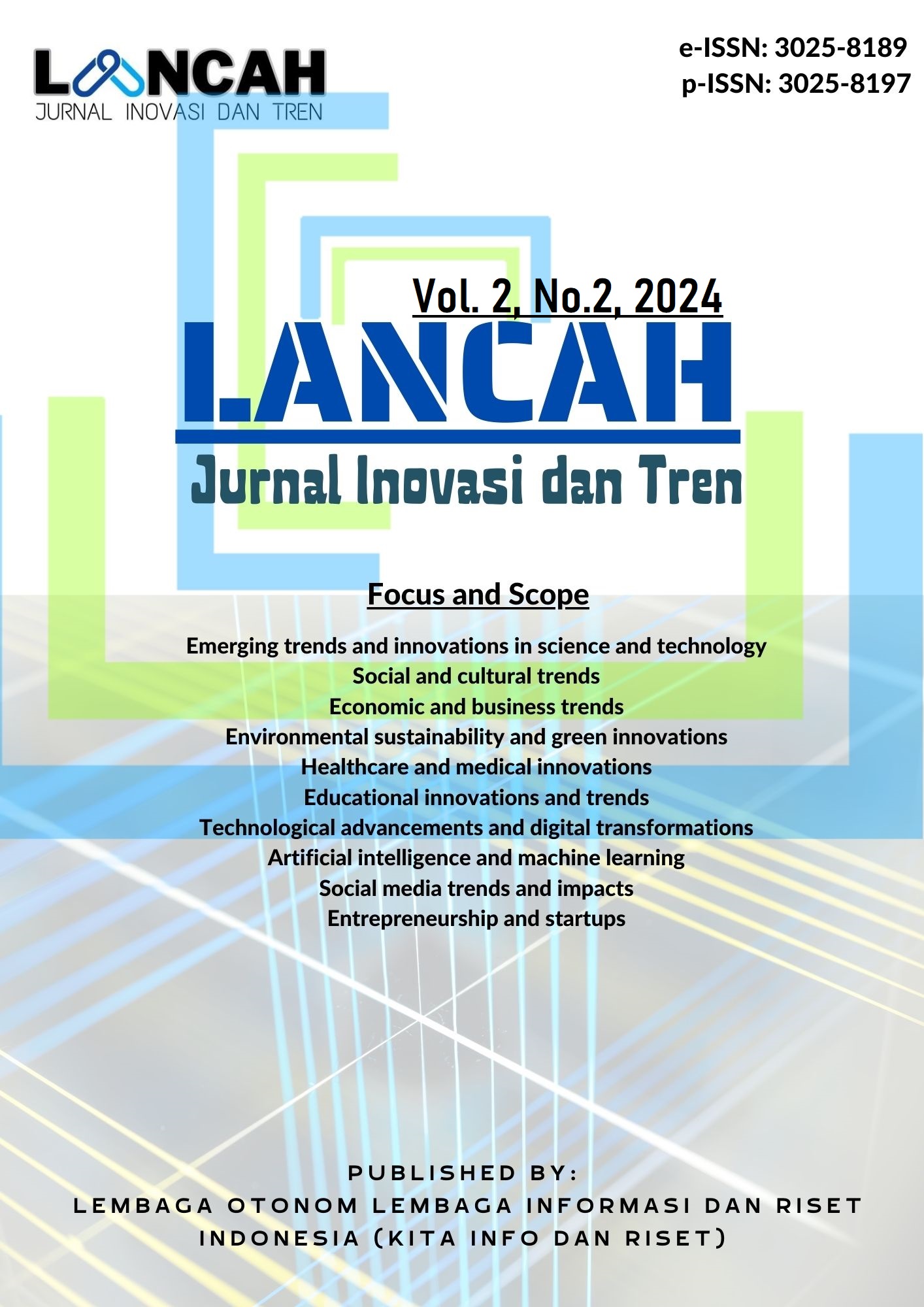Penggunaan Aplikasi Photomath pada Pembelajaran Matematika: Systematic Literature Review
DOI:
https://doi.org/10.35870/ljit.v2i2.2798Keywords:
Photomath, Pembelajaran, MatematikaAbstract
The purpose of this research is to determine the benefits of using the photomath application in learning. Nowadays, students can use media to help solve problems when working on math problems, including watching learning videos on YouTube, or even using math applications such as Photomath. This research uses the Systematic Literature Review method from journals published in 2022 & 2023. The results of this research are that the use of the photomath application can help the mathematics learning process in class. The photomath application is equipped with solution steps so that students can understand how to solve the given math problems.
Downloads
References
Argaswari. 2018. Pemahaman Gen Z Terhadap Sejarah Matematika. Jurnal Pendidikan Universitas Lampung Vol. 9 No 2 2021.
Dewi, A. F. ,& Ahadiyah, K. (2023). Using Photomath Applications on Student Learning Outcomes in Advanced Calculus Courses . International Conference on Education, 153–158.
Dewi, I. W. D. P., & Handayani, I. G. A. (2022). Peranan Aplikasi Photomath Dalam Pembelajaran Matematika Di Era Literasi Digital (Kajian Pustaka). SULUH PENDIDIKAN: Jurnal Ilmu-Ilmu Pendidikan, 20(1), 94-101.
Ibrahim Suparni. 2012. Pembelajaran Matematika Teori dan Aplikasinya.
Muslimah, A., Ramadannia, C., Fitri, A., Dzakiroh, F., Wijaya Kusuma, J., Matematika, J. P., & Keguruan Dan, F. (2023). Penerapan Pemanfaatan Multimedia pada Aplikasi Photomath dalam Pembelajaran Trigonometri kelas XI MIPA V di SMAN 3 Cilegon. Indonesian Journal of Thousand Literacies IJTL, 1(3), 241-360.
Nurfadilah, A., Hakim, A. R., & Nurropidah, R. (2022). Systematic Literature Review: Pembelajaran Matematika pada Materi Luas dan Keliling Segitiga. Polinomial : Jurnal Pendidikan Matematika, 1(1), 1–13.
Oktaviani, R. D., Ilmiah, T., Sholihah, N., Apriliyani, R., & Fauzi, I. (2022). Pemanfaatan Aplikasi Photomath Sebagai Media Pemecahan Masalah Matematis. RANGE: Jurnal Pendidikan Matematika, 4(1), 40-54.
Payung, Z., Kusuma, Y., & Cahya, E. (2022). Pembelajaran Matematika dengan Bantuan Mathematica dan Photomath Software Untuk Meningkatkan Problem Solving Matematika Mahasiswa Calon Guru Sekolah Dasar. Elementary Journal: Jurnal Pendidikan Guru Sekolah Dasar, 5(1), 48-54.
Pikri, A. Z., Yulia, P., & Putri, R. (2023). Photomath Applications for Learning Mathematics Analysis. Mathline: Jurnal Matematika Dan Pendidikan Matematika, 8(2), 295-312.
Triandini, E., Jayanatha, S., Indrawan, A., Werla Putra, G., & Iswara, B. (2019). Metode Systematic Literature Review untuk Identifikasi Platform dan Metode Pengembangan Sistem Informasi di Indonesia. Indonesian Journal of Information Systems, 1(2), 63.
Downloads
Published
Issue
Section
License
Copyright (c) 2024 Muhammad Rifa’i, Yahfizham

This work is licensed under a Creative Commons Attribution-NonCommercial-ShareAlike 4.0 International License.
Copyright and Licensing Agreement
Authors who publish with this journal agree to the following terms:
1. Copyright Retention and Open Access License
- Authors retain full copyright of their work
- Authors grant the journal right of first publication under the Creative Commons Attribution 4.0 International License (CC BY 4.0)
- This license allows unrestricted use, distribution, and reproduction in any medium, provided the original work is properly cited
2. Rights Granted Under CC BY 4.0
Under this license, readers are free to:
- Share — copy and redistribute the material in any medium or format
- Adapt — remix, transform, and build upon the material for any purpose, including commercial use
- No additional restrictions — the licensor cannot revoke these freedoms as long as license terms are followed
3. Attribution Requirements
All uses must include:
- Proper citation of the original work
- Link to the Creative Commons license
- Indication if changes were made to the original work
- No suggestion that the licensor endorses the user or their use
4. Additional Distribution Rights
Authors may:
- Deposit the published version in institutional repositories
- Share through academic social networks
- Include in books, monographs, or other publications
- Post on personal or institutional websites
Requirement: All additional distributions must maintain the CC BY 4.0 license and proper attribution.
5. Self-Archiving and Pre-Print Sharing
Authors are encouraged to:
- Share pre-prints and post-prints online
- Deposit in subject-specific repositories (e.g., arXiv, bioRxiv)
- Engage in scholarly communication throughout the publication process
6. Open Access Commitment
This journal provides immediate open access to all content, supporting the global exchange of knowledge without financial, legal, or technical barriers.











